Vigil
Non-EO
ESA
Quick facts
Overview
| Mission type | Non-EO |
| Agency | ESA |
Vigil - Earth's Devoted Solar Defender in ESA's Space Weather System
Development Status Launch Lagrange References
Once known as "Lagrange," ESA's upcoming space weather mission needed a new name that would reflect its vital role: helping to protect Earth's infrastructure, satellites, inhabitants and space explorers from unpredictable but violent solar events like solar flares and ‘coronal mass ejections'. It's the first mission of its kind, set to monitor our active and unpredictable Sun and help protect us from its violent outbursts – and it has a new name. 1)
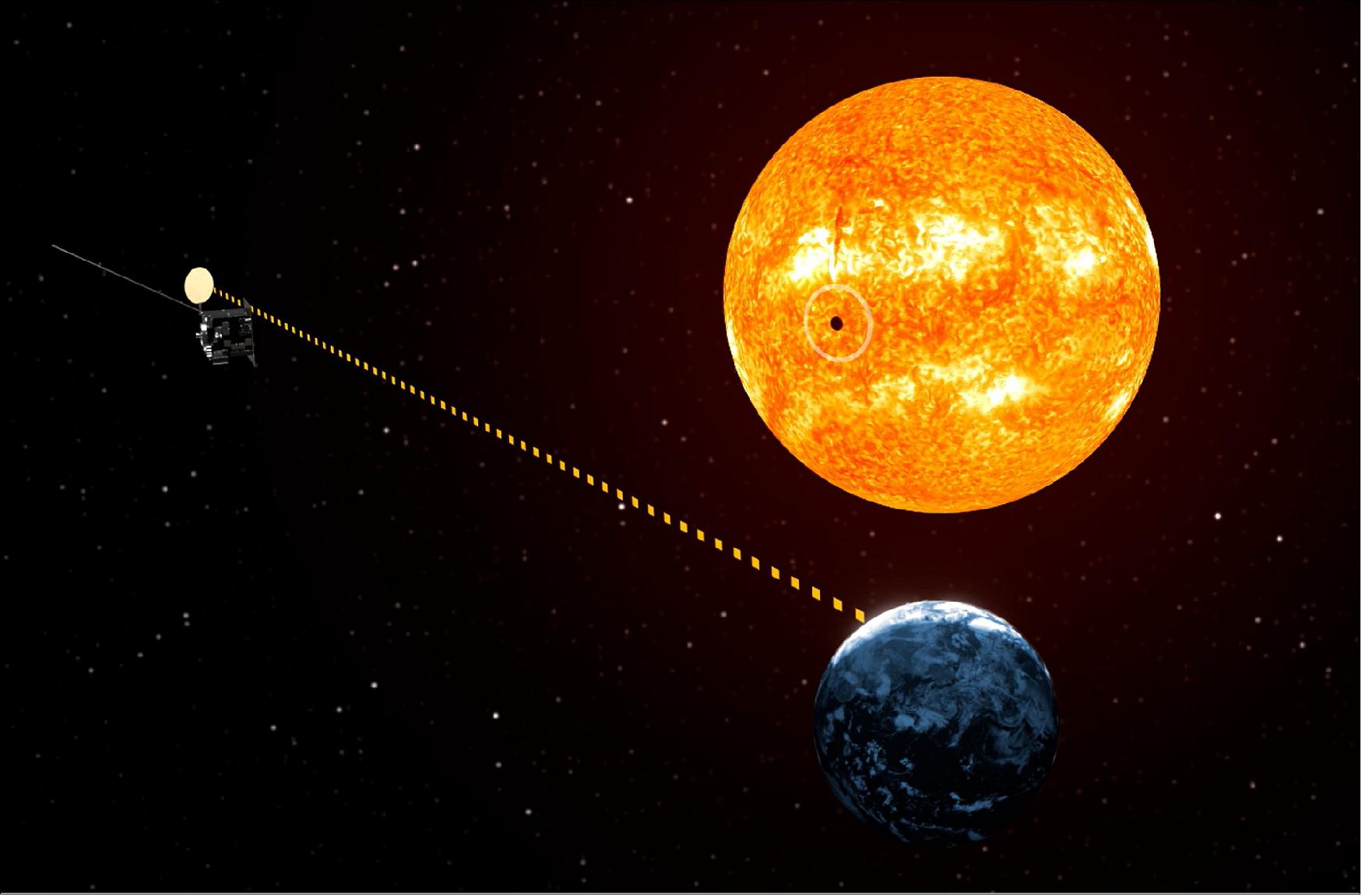
With 5422 submissions from across Europe and indeed around the world – and after weeks of deliberation, countless spreadsheets, three diverse and expert judges and a lively debate – a new name has been selected for our upcoming space weather mission: ESA Vigil.
Thousands of thoughtful, clever and funny names were submitted in the Agency's #NameTheMission mission contest, which ran from May to September 2021.
Once submissions closed, a team from ESA's Communication department and Space Weather Office reviewed all submissions putting a shortlist of just nine names before a panel of invited, external judges.
Armed with their top three respective choices, the judges then took part in a lively, two-hour video chat in which they made the case for their favourite and deliberated the merits of each. Finally, they agreed on a winner.
"We are thrilled with our mission's new name," explains Juha-Pekka Luntama, ESA's Head of Space Weather. "We are thrilled with our mission's new name," explains Juha-Pekka Luntama.
In Latin, ‘vigilis exceptus' means sentry, or guard, while ‘vigilia' means wakefulness and the act of keeping a devoted watch. The judges were particularly impressed with how the name resonated with the mission's role – as a devoted guardian, keeping constant watch over the Sun, for Earth.
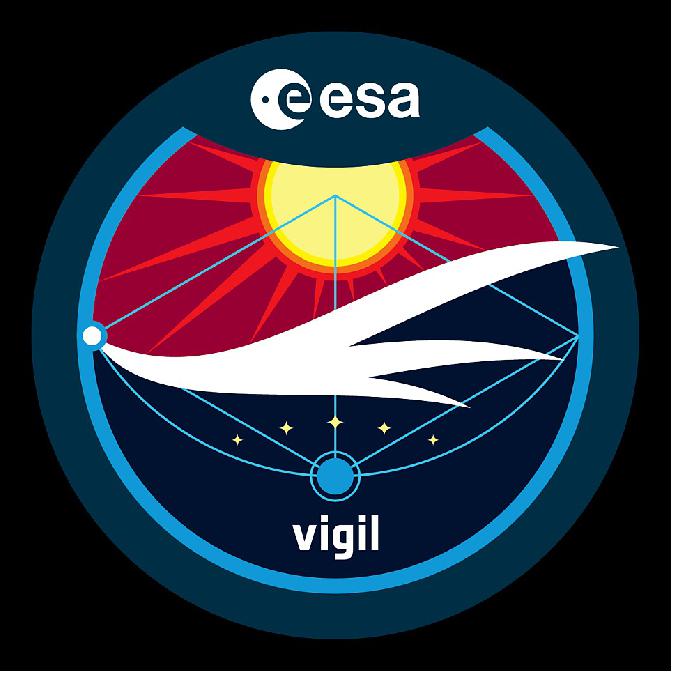
Development Status
• June 14, 2022: The ongoing collaboration between the UK and ESA's European Space Operations Centre (ESOC) in Germany is playing a key role in the success of numerous pioneering space activities. 2)
- These missions – which cover space science, exploration, space safety and Earth observation – were highlighted today as part of a UK government visit to the mission control facility.
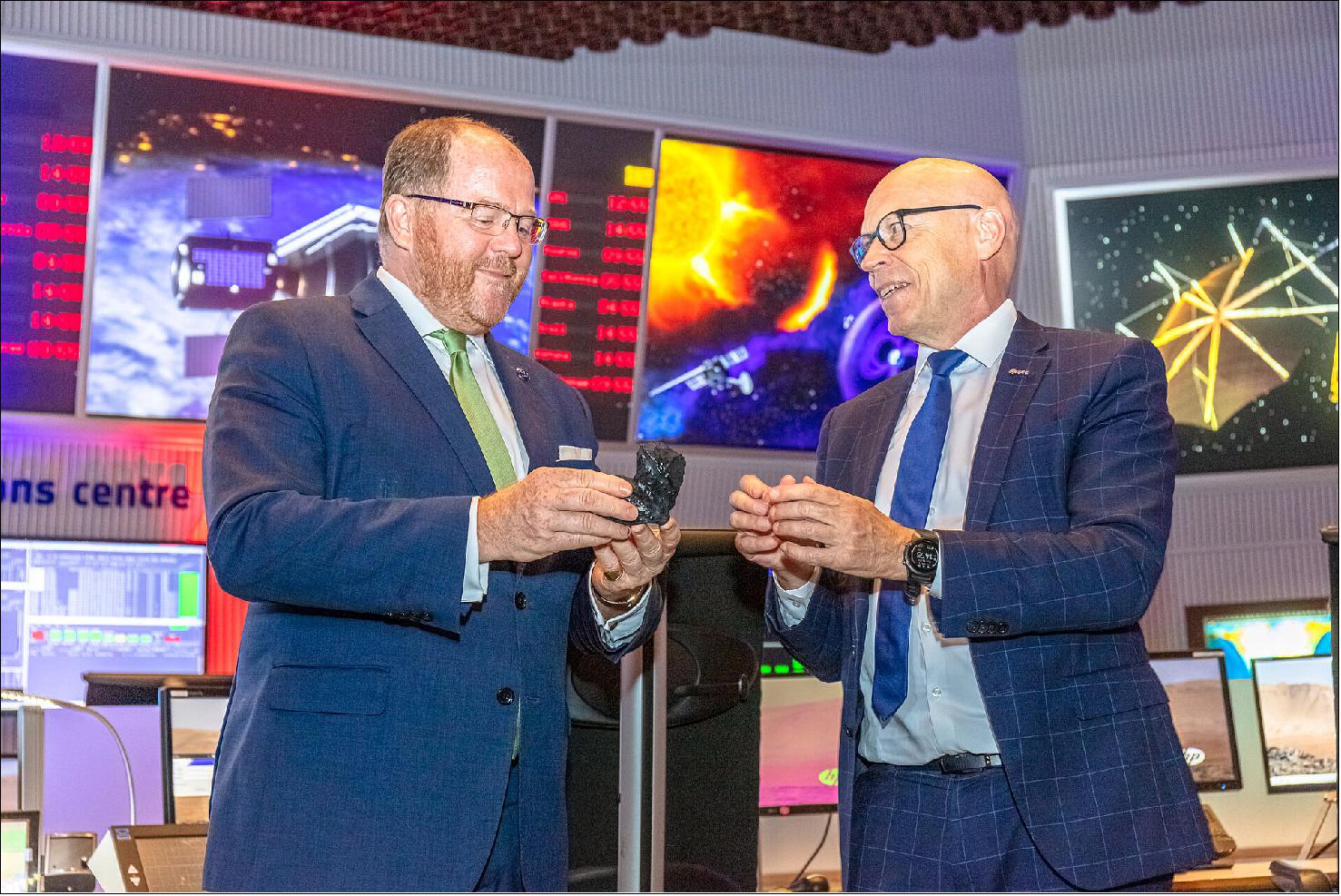
- As part of the visit, UK Science Minister George Freeman received a tour of ESOC's facilities, found out about ESA's Space Safety programme and met with members of the UK workforce.
- Some 85 missions have been flown from ESOC – located in Darmstadt – since its creation in 1967, including many backed by the UK.
- The Sun-observing Solar Orbiter spacecraft, for instance, was built by Airbus at its UK site. The mission uses a suite of 10 instruments – four of which were developed with the help of British scientists and engineers – to carry out close-up studies of the Sun, helping to deliver unprecedented insight into the behaviour of Earth's closest star.
- Shortly after its launch from Cape Canaveral, Florida, in February 2020, ESOC engineers took control of Solar Orbiter, guiding the mission on its 42 million km journey towards the Sun.
- Building on the experience of developing Solar Orbiter, British companies and institutes have also made vital contributions to the development of a new space weather mission called Vigil, which is expected to be flown from ESOC.
- The first mission of its kind, Vigil will deliver a stream of near real-time operational information on solar activity to help protect satellites in space as well as vital infrastructure on Earth.
- Airbus UK is the prime contractor for the spacecraft and several of its state-of-the-art instruments are being developed under the leadership of British institutes.
- In addition, academia and industry in the UK play an important role in ESA's space weather network, managed from ESOC, which provides timely and reliable information to help organisations on Earth mitigate the adverse impacts of space weather.
- In another pioneering activity, the UK is supporting current and future exploration efforts through the development of commercial deep-space communications.
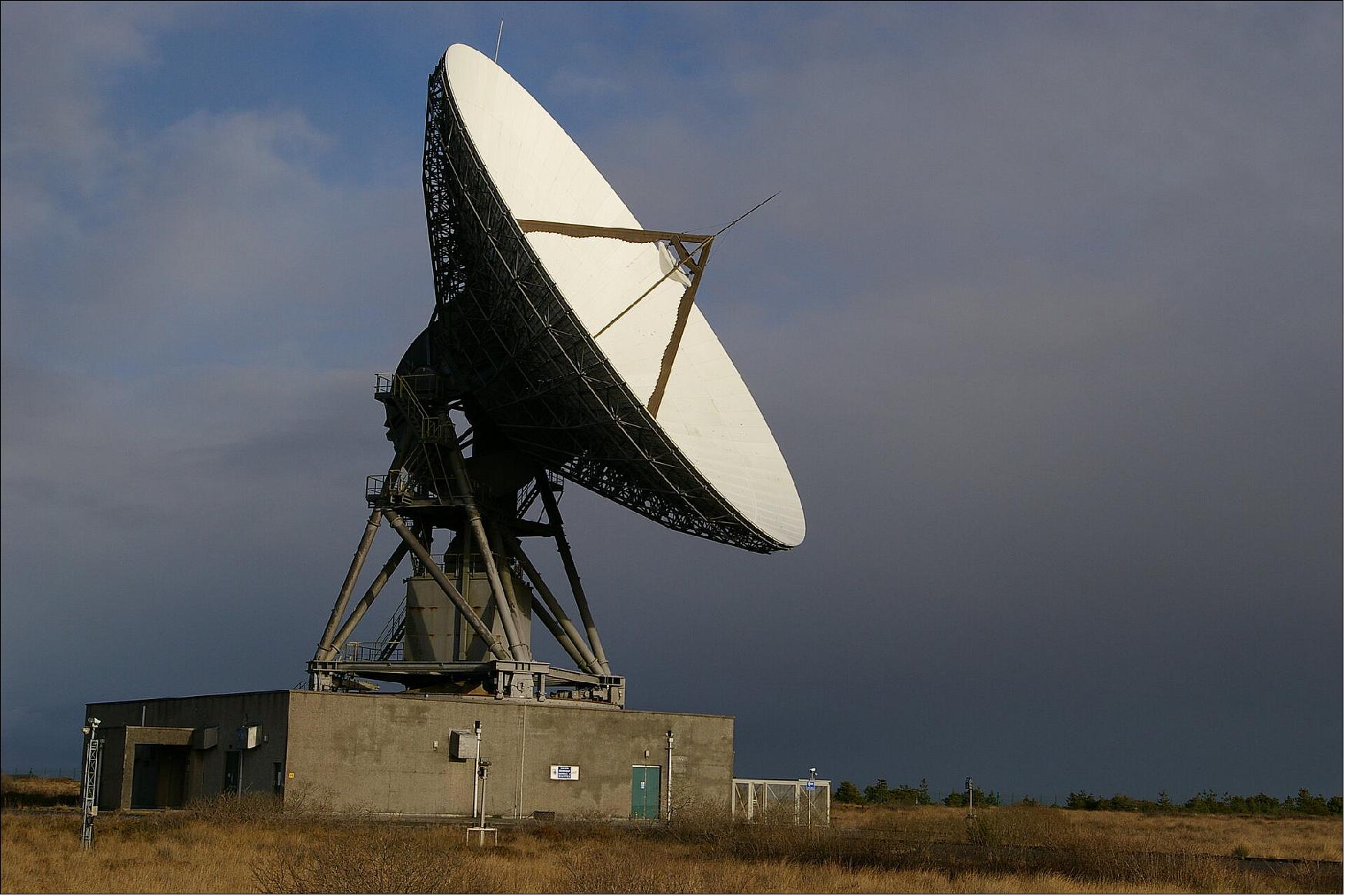
- Engineers from ESOC have worked closely with UK experts at the Goonhilly Earth Station in Cornwall to help develop and certify their world-first capacity to offer commercial deep space tracking services to both businesses and institutional actors in the space industry.
- "We're now providing routine deep space communication services for ESA missions at Mars and preparing to support international missions to the Moon," says Matthew Cosby, Chief Technology Officer at Goonhilly. "And we forecast strong growth for our services especially in the light of the developing ‘commercial lunar economy' involving new space entrants from the UK, Europe and worldwide."
- Cooperation between ESOC and the UK is also supporting European Earth observation activities.
- The British-built Aeolus wind-monitoring mission, for example, is being flown from the mission control centre.
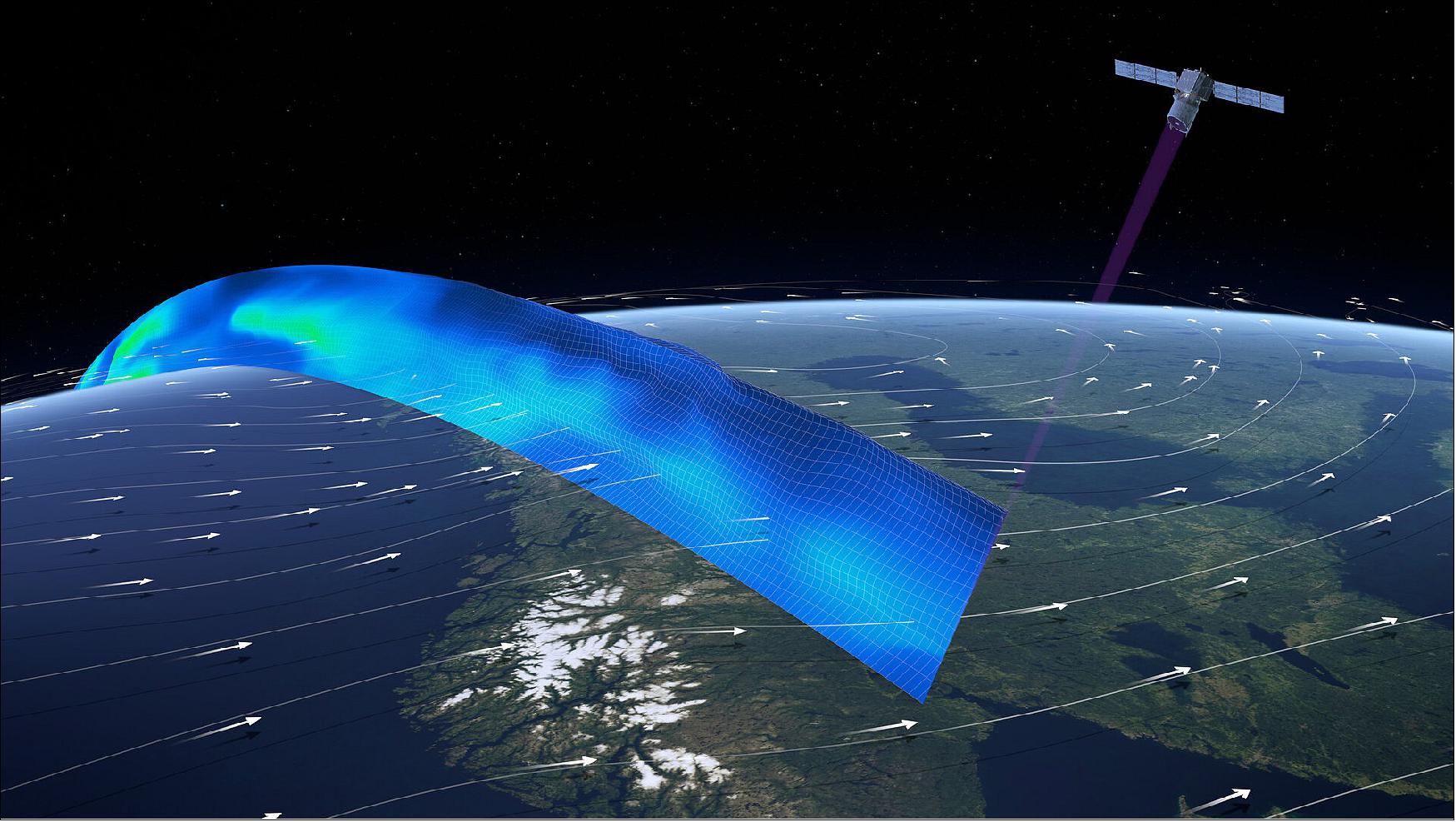
- Launched in 2018, Aeolus uses breakthrough laser technology to monitor the winds sweeping across the planet.
- The mission – which is part of ESA's Earth Explorers programme – was originally developed as a research and demonstration activity, but it has far exceeded its initial goals, with several meteorological organisations across the world now feeding Aeolus data into their weather forecasting models.
- The Aeolus flight control team manages the complex operations of this new technology from the Earth Explorer control room at ESOC and is responsible for command and control, on-board software maintenance and mission planning, as well as interfacing with other ground segment teams.
- In the coming years, this control room will also host two more UK-backed Earth Explorer missions that are slated to be flown from ESOC, including Biomass – which will deliver crucial information on how the world's forests are changing – and FORUM, which will provide new insight into the planet's radiation budget and how it is controlled.
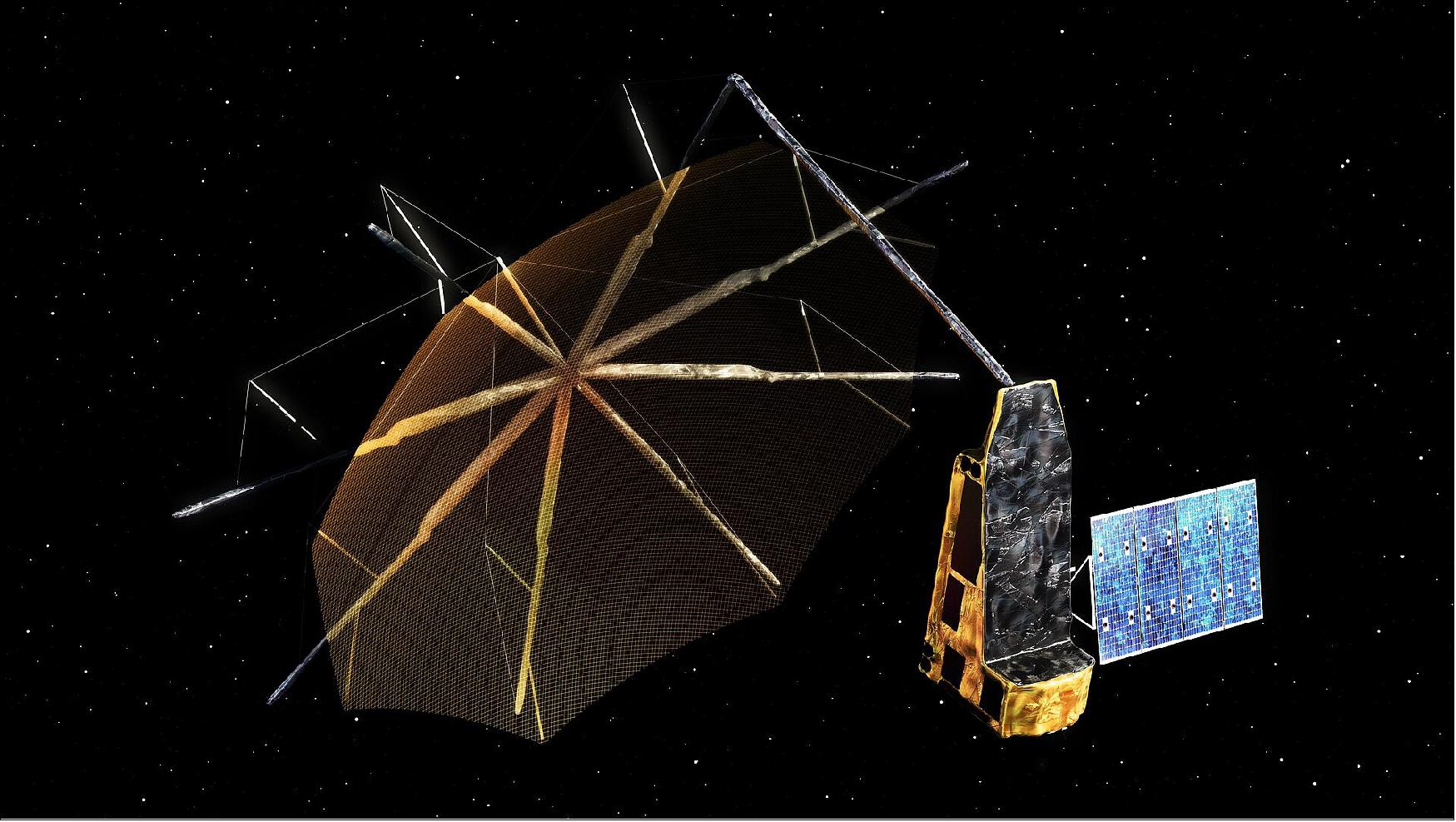
- In addition, UK industry is supporting European leadership in space debris removal through involvement the development technology for ClearSpace-1, the first mission to remove an item of debris from orbit, planned for launch in 2025.
- "UK expertise is also making vital contributions to the development of our new space weather mission called Vigil, which is expected to be flown from ESOC," says Rolf Densing, ESA's Director of Operations and Head of ESOC.
- "The success of ESA's Space Safety programme, based at ESOC, relies on strong support from our Member States, and the UK has a unique set of technical, scientific and industrial abilities that will be vital to help tackle the problems of space debris, planetary defence and hazardous solar activity."
• February 2020: The Vigil mission is in development. 3)
• November 2, 2020: Lagrange will be Earth's first dedicated space weather observatory to warn of potentially harmful turbulence in our parent star. Positioned 150 million km away at Earth-Sun Lagrange point 5, the spacecraft will resemble a referee at a sports game, able to simultaneously observe both the Sun and Earth as well as the space in between. 4)
- But Lagrange's original iteration received insufficient support at last year's Space19+ Ministerial Council, so ESA's CDF (Concurrent Design Facility) study looked into the possibility of achieving mission goals through a minimum configuration within a fixed budget, including splitting the payload between two smaller satellites.
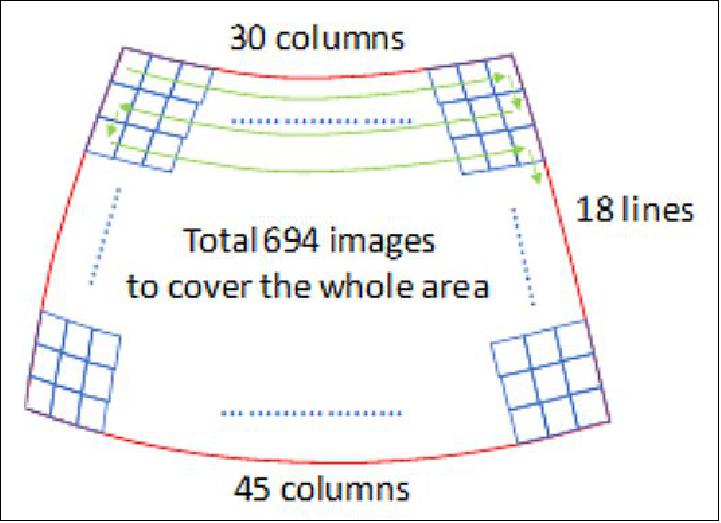
Launch
A launch of the Vigil mission is planned for the mid-2020's (Ref. 3).
Orbit: The Vigil spacecraft will be positioned at L5 (Langrage Point 5, a stable point, 60º behind Earth) at 1.5 million km from Earth and 150 million km from the Sun.
Lagrange Space Weather Mission
Space weather describes the changing environment throughout the Solar System, driven by the energetic and unpredictable nature of our Sun. Solar wind, solar flares and Coronal Mass Ejections can result in geomagnetic storms on Earth, potentially damaging satellites in space and the technologies that rely on them, as well as infrastructure on the ground. 5) 6)
ESA is now working with European industry to assess options for the spacecraft and its mission, with initial proposals expected early in 2020.
As of 2018, Lagrange is an ESA concept study for a solar weather mission. Because Earth is well protected against space weather by its magnetic field and the atmosphere, only a limited amount of space weather observations are possible from Earth's surface. For example, our magnetic field deflects most of the solar wind charged particles away from Earth and the atmosphere filters out extreme ultraviolet and X-ray wavelengths from sunlight.
The baseline working approach for the SSA (Space Situational Awareness) Space Weather Network is to collect as much of the required measurement data using ground-based instruments as possible, because ground-based instruments are usually less expensive and easier to maintain and upgrade than spaceborne instruments on board satellites.
However, to gain all the necessary, accurate, realtime data needed for future space-weather warning services, data from instruments in space are absolutely critical.
To ensure a robust capability to monitor, nowcast and forecast potentially dangerous solar events, ESA has initiated the assessment of two possible future space weather missions. This assessment foresees positioning spacecraft in orbit at the L1 and L5 Lagrangian points - points in space where gravitational forces and the orbital motion of the spacecraft, the Sun and Earth interact to create a stable location from which to make observations.
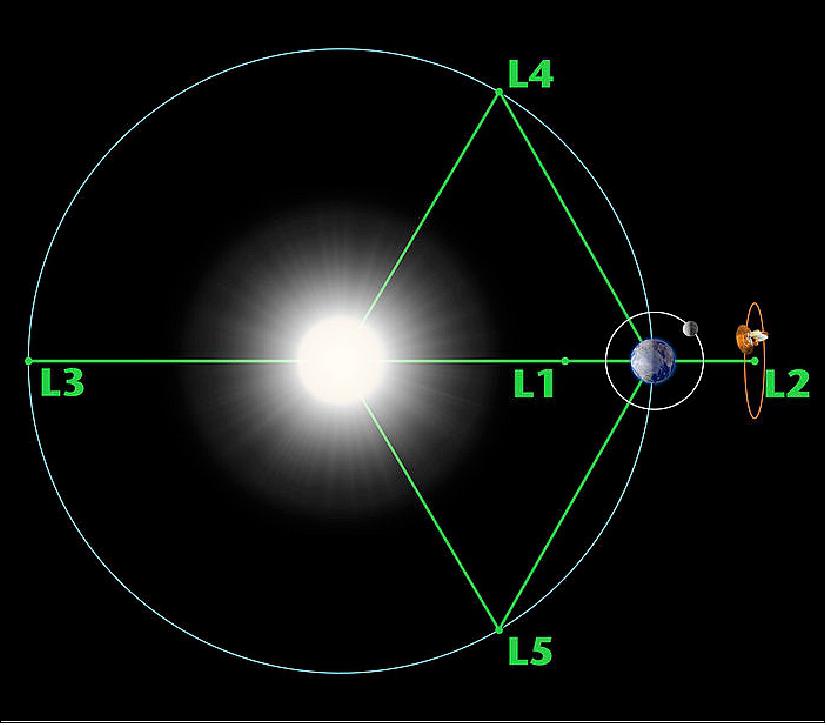
In particular, of the five Lagrangian points of the Earth-Sun system, L1 and L5 are very good locations from which spacecraft can monitor interplanetary space and solar activity.
L1 is in the solar wind "upstream" from Earth, so measurements at L1 provide information about the space weather coming toward Earth. In contrast, the L5 point (located 60 degrees behind Earth, close to its orbit) provides a way to monitor Earth-oriented coronal mass ejections (CMEs) from the 'side' so as to give more precise estimates of the speed and direction of the CME. These measurements can be used to provide space weather warnings, alerts and status information to customers on Earth.
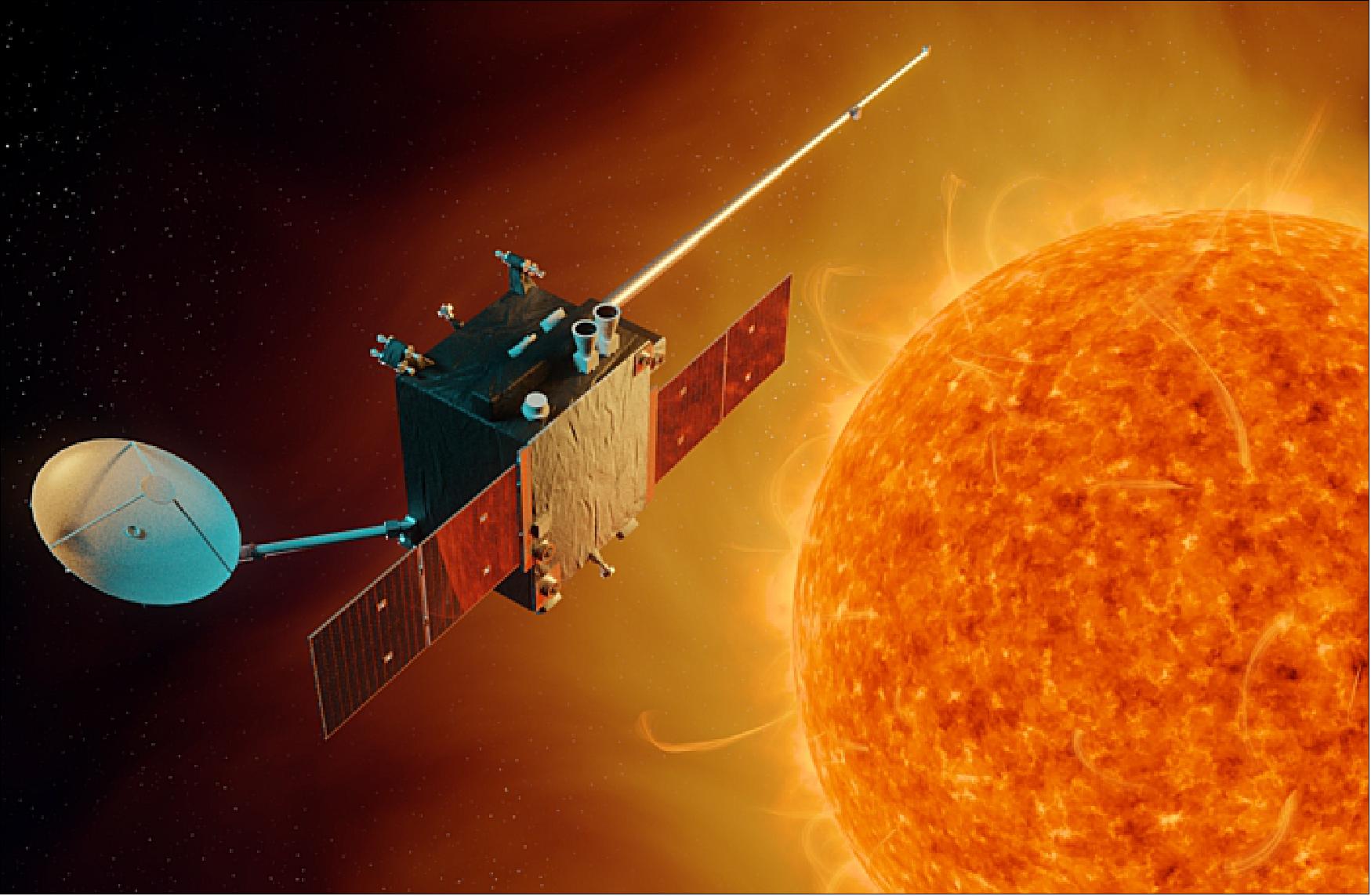
ESA is planning Earth's first dedicated space weather observatory to warn of potentially harmful turbulence in our parent star. Like a referee at a sports game, the Lagrange spacecraft will be able to observe both the Sun and Earth as well as the space in between – but will itself be in the space weather line of fire. 8)
"This will be an operational rather a scientific mission, meaning it has to keep on working because people will be depending on it," explains ESA space environment specialist Piers Jiggens. "On Earth it wouldn't be acceptable to have weather forecasting infrastructure that stops working when a hurricane is coming, because coverage would be lost at the point when an extreme weather event impacts our lives the most. In space it will be the same – so we at ESA's Space Environment and Effects section have been working closely with the Agency's Space Weather Office, overseeing the Lagrange mission, for several years. Our goal is an optimized design that endures the radiation storms associated with space weather events in an efficient but effective way."
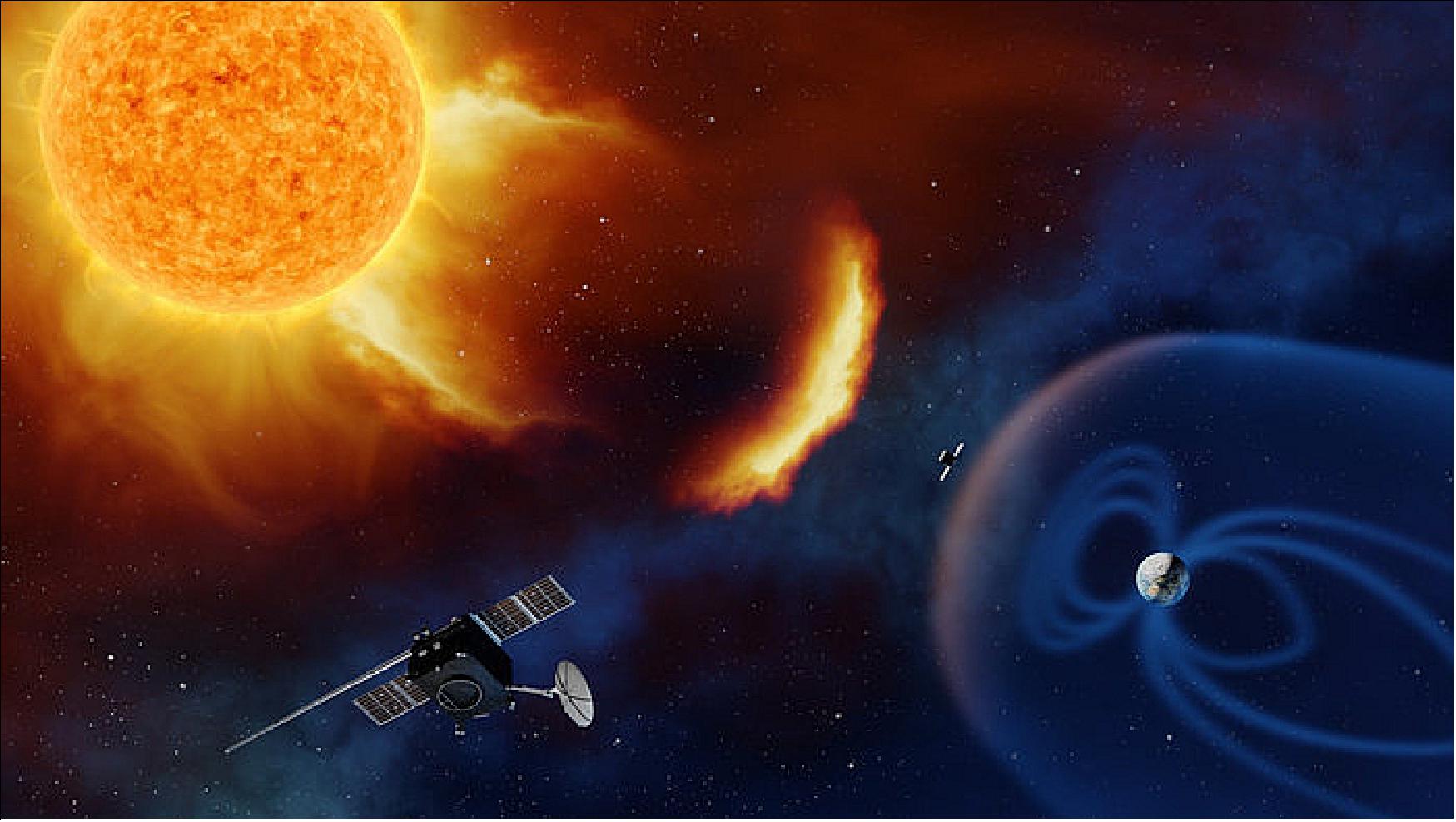
Lagrange takes its title from the gravitationally stable locations in the Sun-Earth system, one of which it will orbit around – the fifth Earth-Sun Lagrange (L5) point. These have been collectively named after the Italian borne mathematician (Giuseppe Lodovico Lagrangia, 1736-1813, who later moved to Paris and became a member of the French Academy of Sciences). -Lagrange first theorized the existence of these stable points in space. At L5, the Lagrange spacecraft will be able to identify stormy segments of the Sun's surface before they rotate around to face Earth, and then track CME clouds as they head our way.
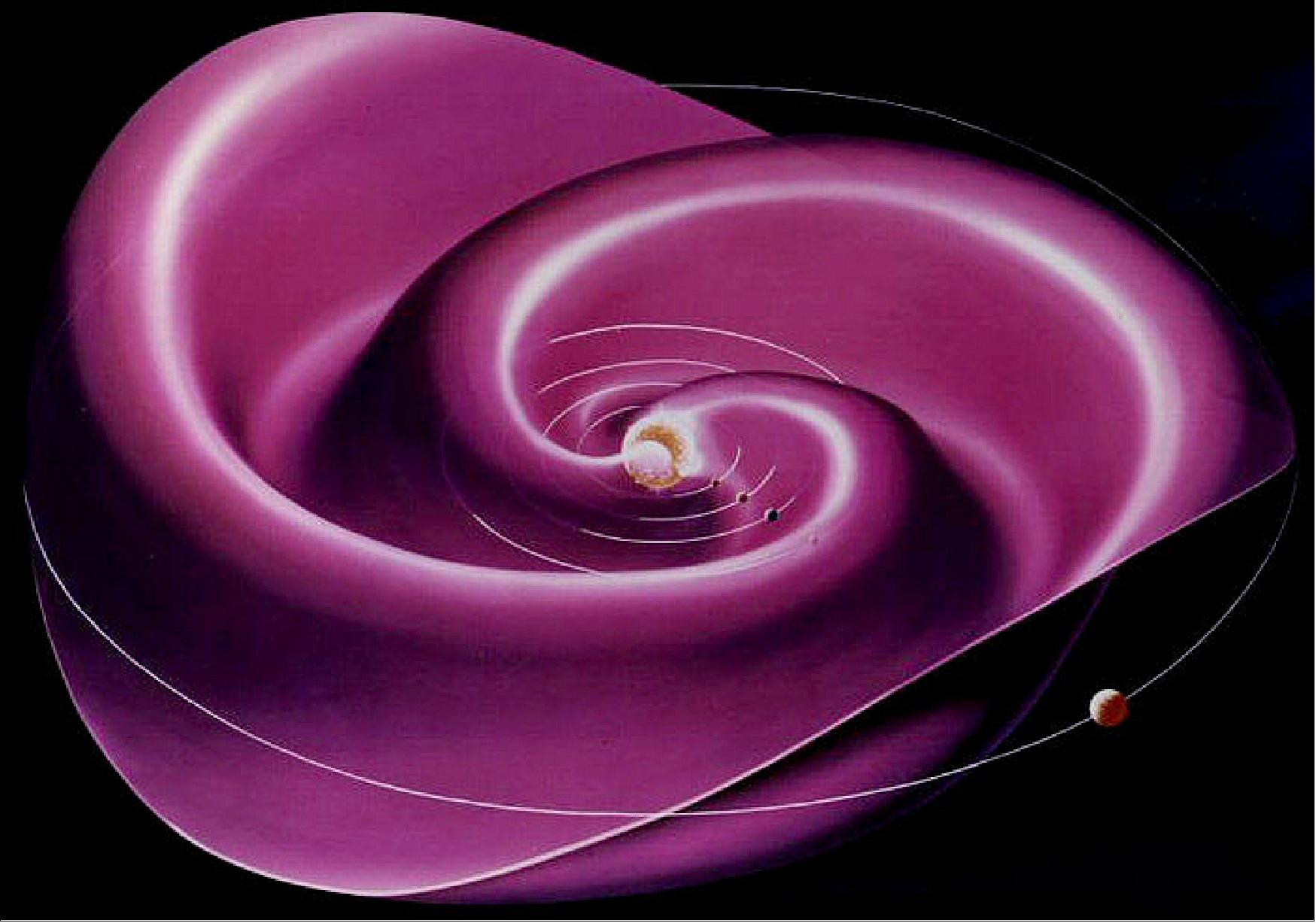
"Just because the spacecraft is not aligned with Earth and the Sun does not mean it will not be affected by the space weather events it will be monitoring," adds Piers. "This is because the solar magnetic field, which high energy particles follow, is curved because of the Sun's rotation, a phenomenon known as the ‘Parker spiral'. What this means is that the fastest charged particles from a CME event will reach Lagrange in a matter of minutes after an eruption, potentially causing adverse effects to the spacecraft at just the point it is most needed to resolve the direction and speed of the material headed Earthward, working on a timescale of hours. Often you can see some of these effects on SOHO images of CMEs – what looks like snow is actually charged particles triggering the imager detectors. In addition, radiation can cause ‘bit flips' of onboard memory."
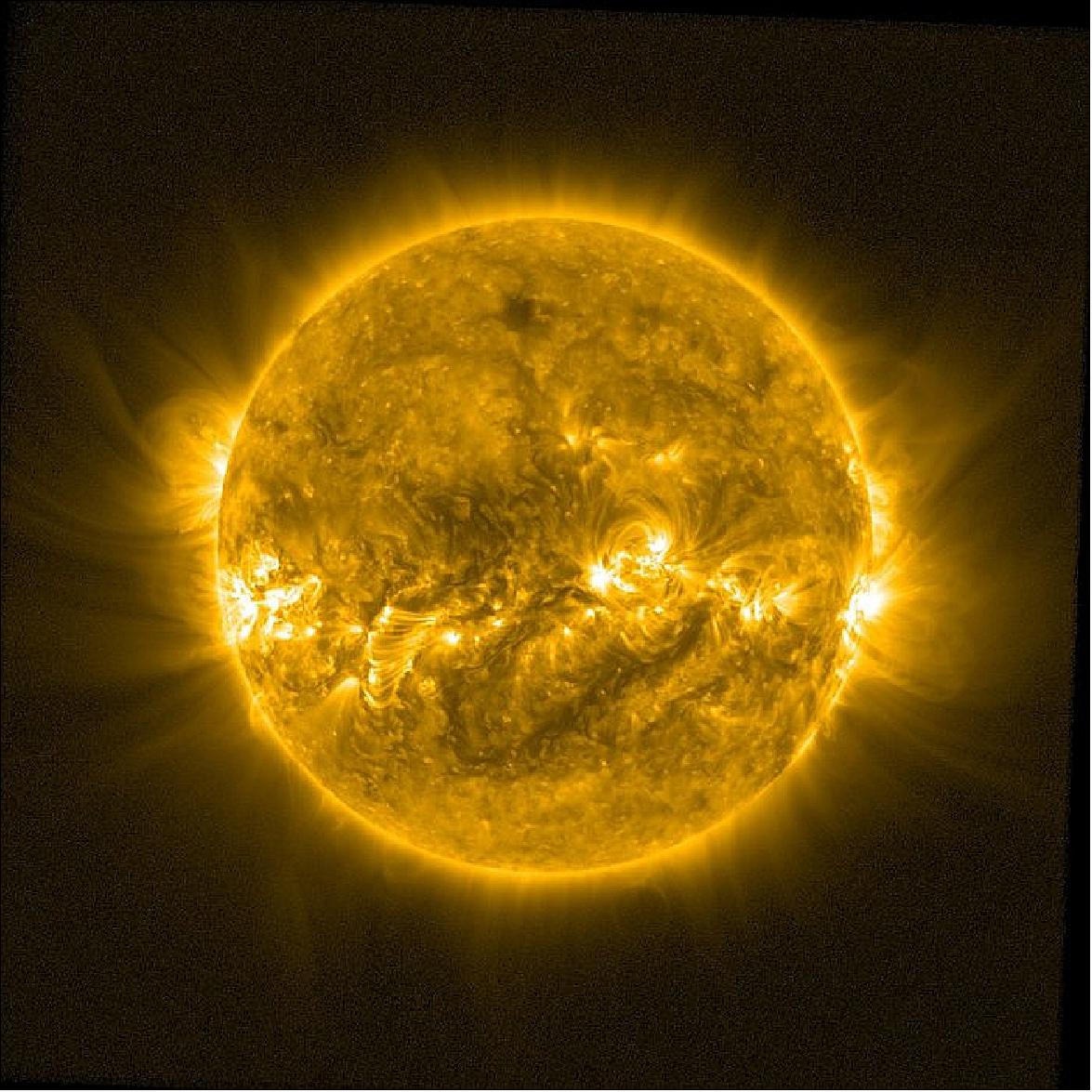
As is already standard, the Lagrange spacecraft itself will be built from carefully screened radiation hardened electronic components. Its onboard systems will be equipped with ‘fault detection and correction' systems to identify and correct for bit flips or other anomalies. For the Lagrange mission, ESA and its industrial partners are investigating how to make these systems more robust still.
"For the L5 mission, the spacecraft has to be more intelligent than others, and will need to have a clever failure detection, isolation and recovery strategy," notes Stefan Kraft, overseeing the mission. "When other missions hide away and go into sleep mode, we will need to face the storm and stay awake to remain always on duty."
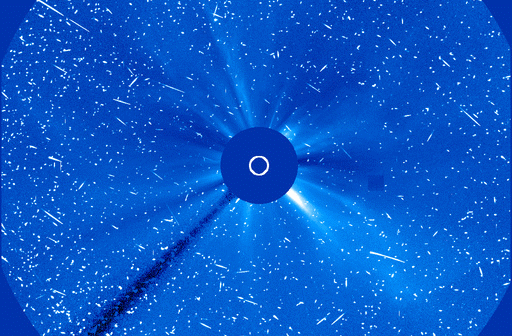
On the imaging side, the particles impair the vision of the mission's highly sensitive instrumentation. Automated onboard systems will apply artificial intelligence to identify and remove false pixels on a frame-by-frame basis. — Reduced image exposure time is another solution being looked into to decrease the number of radiation ‘hits'. In addition extra aluminum shielding could be added around the detectors, to prevent charged particles impacting them from the side.
As Juha-Pekka Luntama of ESA's Space Weather Office explains: "The measurements from Lagrange need to be clear in real-time so they can be fed into space weather models and allow forecasters to predict possible impacts."
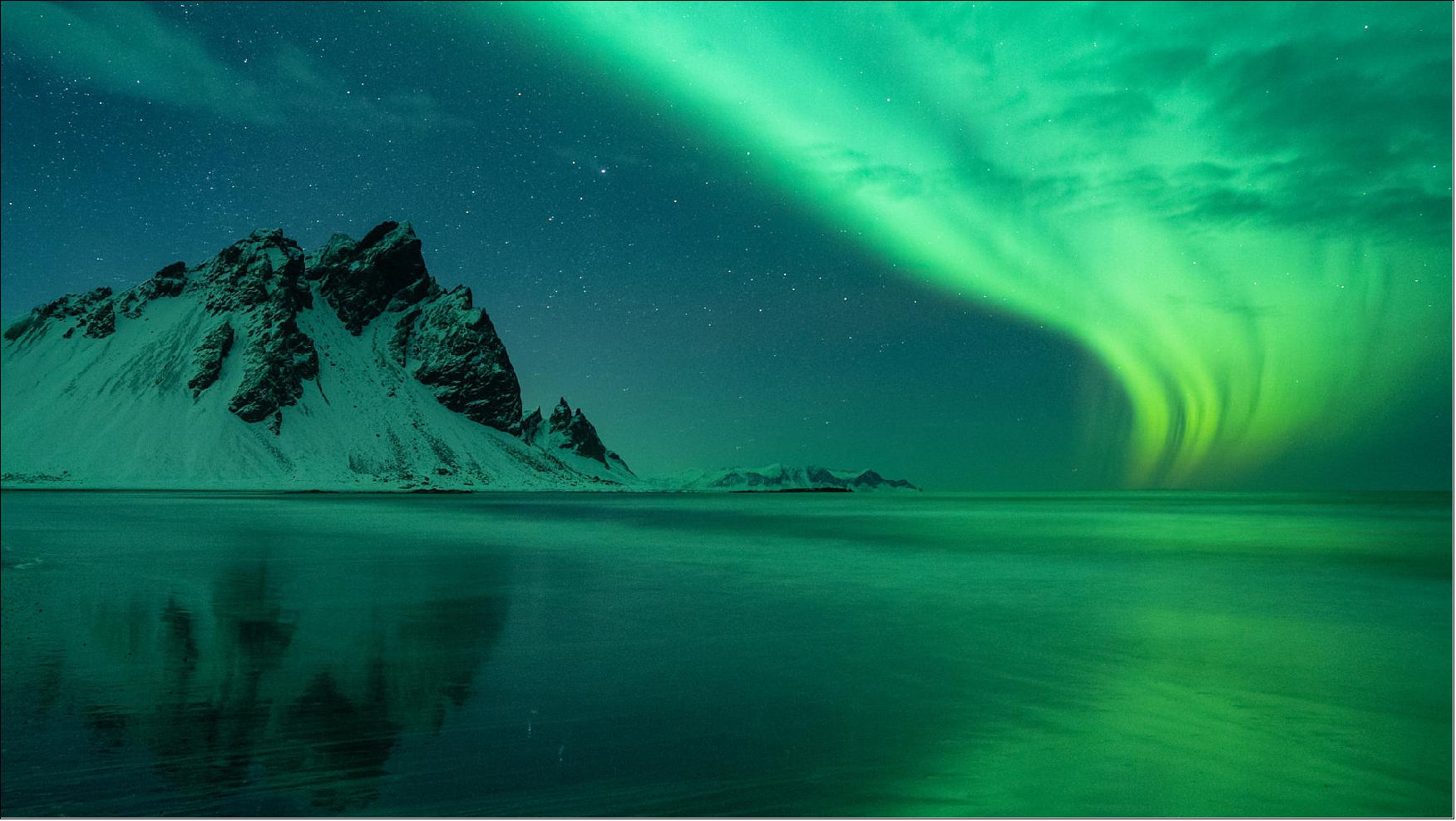
The Lagrange mission is currently being developed through parallel industrial studies, to present to Europe's space ministers at Space19+ at the end of this year. If approved, it will launch by 2025.
The US National Oceanic and Atmospheric Administration (NOAA) is planning a solar observatory at L1 with a launch targeted in 2024. This mission would provide data complementing observations from L5. The two missions together would form a combined observation system, offering stereoscopic views of space weather events as they occur.
References
1) "Introducing ESA Vigil: Earth's devoted solar defender," ESA Safety & Security, 10 February 2022, URL: https://www.esa.int/Safety_Security/Space_weather/Introducing_ESA_Vigil_Earth_s_devoted_solar_defender2) "ESA mission control builds UK connections," ESA Enabling & Support, 14 June 2022, URL: https://www.esa.int/Enabling_Support/Operations/ESA_mission_control_builds_UK_connections
3) "Vigil," ESA, February 2022, URL: https://www.esa.int/Safety_Security/Vigil
4) "From the Moon to Mars, future missions studied by CDF," ESA Enabling & Support, 2 November 2020, URL: https://www.esa.int/Enabling_Support/Space_Engineering_Technology/From_the_Moon_to_Mars_future_missions_studied_by_CDF
5) "ESA's future Lagrange mission to monitor the Sun," ESA, 7 November 2018, URL: http://m.esa.int/spaceinvideos/Videos/2018/11/ESA_s_future_Lagrange_mission_to_monitor_the_Sun
6) "Where no mission has gone before," ESA Space Situational Awareness, 2 February 2018, URL: https://www.esa.int/Our_Activities/Operations/Space_Situational_Awareness/Where_no_mission_has_gone_before
7) http://m.esa.int/spaceinvideos/Videos/2018/11/ESA_s_future_Lagrange_mission_to_monitor_the_Sun
8) "ESA's space weather mission to be protected against stormy Sun," ESA, 5 March 2019, URL: http://m.esa.int/Our_Activities/Space_Engineering_Technology/ESA_s_space_weather_mission_to_be_protected_against_stormy_Sun
The information compiled and edited in this article was provided by Herbert J. Kramer from his documentation of: "Observation of the Earth and Its Environment: Survey of Missions and Sensors" (Springer Verlag) as well as many other sources after the publication of the 4th edition in 2002. - Comments and corrections to this article are always welcome for further updates (eoportal@symbios.space).
Development Status Launch Lagrange References Back to top